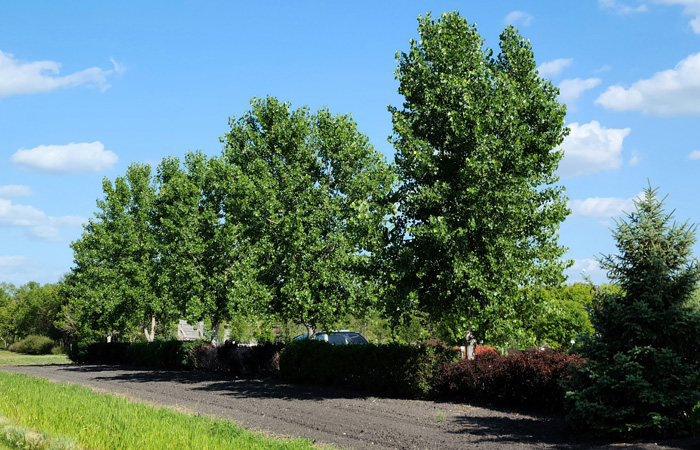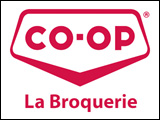Shelterbelts have been utilized a long time on the prairies. After the dust bowl of the 1930s people realize how important it was to protect their real estate from blowing away. There are several good reasons to have shelterbelts / windbreaks. The most common these days is simply to block the wind chill factor throughout the year.
It’s amazing how much warmer a yard is when there’s no northwest wind howling through. A comfortable 22 Celsius day can become chilly with a 30 km wind. The winter wind chill can be bone-chilling without trees.
A second reason for trees, to block snow. Nobody likes more snow than necessary on their driveways. While we’re talking winter. A good thick shelterbelt can save 15 to 20% of your heating bill. That’s all from blocking wind and trapping heat. Privacy is another reason. It’s nice to have neighbours but it’s also nice to have some privacy. Lastly, it’s just nice to look at trees. Nature is aesthetically pleasing. These are the trees that make the most resilient shelterbelt, in my opinion.
Manitoba maple, Siberian elm, Japanese Elm, Hackberry, Green Ash, poplars and Willows. The reasons? Manitoba maple is an all-around resilient native tree. They are moderately fast growing, and tightly branch helping drop wind significantly. There are no devastating diseases or insects. The downside would be that they produce a fair bit of seed. They do not tolerate soggy spots. I know you can make maple syrup from them.
Siberian elm this one will raise hackles for most people. The upside of this tree is that it is very fast-growing, drought and soil tolerant, it also holds its leaves well into mid late October producing more privacy and wind resistance. It does not put up with soggy soil and worst of all the produces an overabundance of seed. This tree I would only recommend for Farm shelterbelts or possibly large grassy parks. Farmers work their fields so that the seed is never more than an annual problem. If the seed germinates in the grass it doesn’t last long either.
Japanese Elm is a little smaller then Siberian elm. It also produces significantly less seed. This one works well for a shorter shelterbelt. The easiest one to find on the market would be Discovery it’s a bit of an ugly duckling when it’s young but has a beautiful form as it matures. Knight Rider elm is a cross between Siberian and discovery. Good burgundy fall colour, fast grower but may have more seed.
Hackberry or sometimes called Sugarberry is also a native but only to a small pocket South of Lake Winnipeg. It is very common in Minnesota and North Dakota. We need to take a serious look at using it more. I have it in a shelter belt already and it is resilient. Selection for form is important because it does have the potential to go Haywire. I have been selecting off of upright uniform looking trees. They are cold tolerant, can handle some wet and dry. They will grow quickly once established similar to American elm.
Why did I mention that Ash word?! Everybody knows about emerald ash bore’s massive destruction east and south of here. We are very fortunate not to have the impact due to our cold climate. The jury is still out on how much damage the bug will do here. It has been in the province 8 years and only a very few trees have been cut in Winnipeg specifically because of infestation. The bug dies at – 34° even inside the tree if the temperature remains there for 36 hours. We are recommending planting mix shelterbelts where possible. That way if another insect or disease Moves In we have diversified our portfolio of trees. Ash Mb Maple, Hackberry and Elm make a good mix for growth rates.
This leaves poplars and Willows. Poplars are the fastest-growing 3,-5′ when young. Their strength is their speed and height. They are more open and Airy without leaves though. They are also more susceptible to High PH soil. The new hybrid varieties all lived 60 to 80 years. Willows are fast growing at 2 to 3 ft. per year. They also struggle with high PH soil. Other than the weeping willow they do have some seed fluff and spring. There are no perfect shelterbelt trees but there are some good choices based on what your needs are.
(I forgot to mention that all the new hybrid poppers are also seedless / fluff less.)




